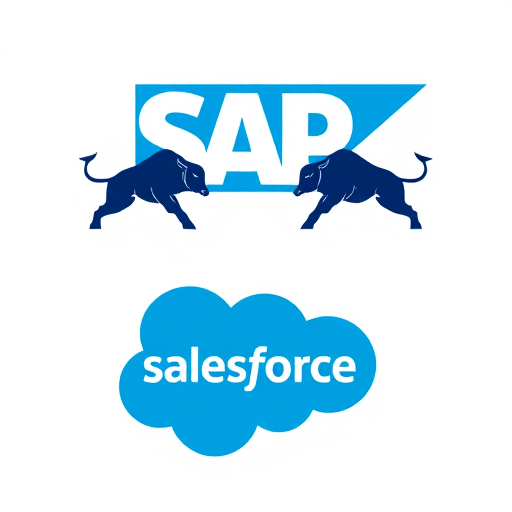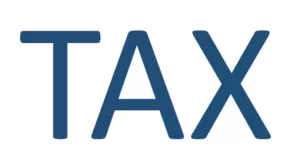Choosing the right CRM or ERP system can be a game-changer for businesses, particularly in a rapidly evolving market like India. Two giants dominate this space: Salesforce and SAP. This blog post will delve deep into a comprehensive comparison of Salesforce vs. SAP, considering the specific needs and nuances of the Indian business context, helping you determine which platform is better suited for your organization in 2024.
Salesforce vs. SAP: A Head-to-Head Comparison for the Indian Market
While both Salesforce and SAP offer robust solutions for managing business processes, they cater to different needs and operate with distinct philosophies. Understanding these differences is crucial for making an informed decision.
1. Focus and Functionality:
- Salesforce: Primarily known as a cloud-based CRM (Customer Relationship Management) platform, Salesforce excels at managing customer interactions, sales processes, marketing automation, and customer service. Its strength lies in its ease of use, flexibility, and extensive ecosystem of apps and integrations. For Indian businesses looking to enhance customer engagement and streamline sales operations, Salesforce offers a powerful solution.
- SAP: SAP, on the other hand, is a comprehensive ERP (Enterprise Resource Planning) system that covers a wider range of business functions, including finance, human resources, supply chain management, and manufacturing. While SAP also offers CRM functionalities through its various modules (e.g., SAP Sales Cloud, SAP Service Cloud), its core strength lies in its ability to integrate and manage complex business processes across an entire enterprise. Indian businesses with complex operational requirements and a need for a centralized system might find SAP a better fit.
2. Deployment Model:
- Salesforce: Salesforce is primarily cloud-based, offering various cloud deployment options like Sales Cloud, Service Cloud, Marketing Cloud, and more. This cloud-first approach translates to faster deployment, lower upfront costs, and easier scalability, making it attractive for Indian businesses looking for agile solutions.
- SAP: SAP offers both on-premise and cloud-based deployment options. While traditionally an on-premise solution, SAP has been investing heavily in its cloud offerings like S/4HANA. However, cloud adoption in India for SAP is still evolving, and on-premise deployments remain prevalent, particularly for larger enterprises.
3. Cost of Ownership:
- Salesforce: Salesforce’s subscription-based pricing model typically involves lower upfront costs compared to SAP. However, the cost can escalate based on the number of users, features, and storage required. Indian businesses need to carefully evaluate their needs and choose the appropriate Salesforce edition and add-ons to optimize costs.
- SAP: SAP’s on-premise deployments involve significant upfront investment in hardware, software licenses, and implementation. Cloud-based SAP solutions offer subscription-based pricing but can still be more expensive than Salesforce, especially for complex implementations. Indian businesses should factor in the long-term cost of ownership, including maintenance, upgrades, and support.
4. Customization and Integration:
- Salesforce: Salesforce’s highly customizable platform allows businesses to tailor the system to their specific needs through its point-and-click interface, Apex code, and extensive AppExchange marketplace. Integrating Salesforce with other systems is relatively straightforward thanks to its robust APIs. This flexibility is particularly beneficial for Indian businesses operating in diverse sectors with unique requirements.
- SAP: SAP also offers customization options, but they can be more complex and require specialized technical expertise. Integrating SAP with other systems can also be challenging, especially for legacy systems. However, for businesses with highly integrated processes, SAP’s comprehensive functionality can offer greater control and consistency.
5. User Experience:
- Salesforce: Salesforce boasts a user-friendly interface, making it easier for employees to adopt and use the platform effectively. This ease of use can lead to increased user adoption and improved productivity, particularly beneficial for Indian businesses with diverse user profiles and varying levels of technical expertise.
- SAP: Traditionally, SAP’s user interface has been perceived as less intuitive compared to Salesforce. However, with the introduction of Fiori, SAP’s modern user experience, the usability has improved significantly. Still, some users might find the navigation and functionality more complex than Salesforce.
6. Indian Market Specific Considerations:
- Localization: Both Salesforce and SAP offer localization features for the Indian market, including support for multiple languages and currencies.
- GST Compliance: Both platforms provide solutions for managing GST compliance, a critical requirement for businesses operating in India.
- Mobile Accessibility: With increasing mobile penetration in India, both Salesforce and SAP offer mobile apps and responsive designs for accessing data and functionalities on the go.
- Local Partner Ecosystem: Both Salesforce and SAP have a strong partner ecosystem in India, providing implementation, customization, and support services.
Which is better for your business in India in 2024?
The choice between Salesforce and SAP ultimately depends on your specific business needs and priorities.
- Choose Salesforce if:
- Your primary focus is on improving customer relationship management.
- You need a cloud-based solution with quick deployment and scalability.
- You prioritize ease of use and user adoption.
- You require a highly customizable and integrable platform.
- Choose SAP if:
- You need a comprehensive ERP system to manage all core business functions.
- You require tight integration between different departments and processes.
- You have complex business requirements and need a robust and scalable solution.
- You prefer an on-premise or hybrid deployment model.
Conclusion:
Both Salesforce and SAP are powerful platforms with their own strengths and weaknesses. By carefully considering the factors discussed in this blog post, Indian businesses can make an informed decision and choose the best solution that aligns with their specific needs and goals for 2024 and beyond. Conducting a thorough needs assessment and exploring demos of both platforms is highly recommended before making a final decision.



